Archery merit badge safety is paramount in ensuring a safe and enjoyable archery experience. This comprehensive guide provides an overview of the safety guidelines, regulations, and best practices associated with archery, empowering individuals to participate in this rewarding activity with confidence and competence.
Understanding the potential hazards and risks involved in archery is crucial for mitigating accidents and injuries. Proper equipment maintenance, range safety protocols, and personal protective gear are essential elements of a safe archery environment. Additionally, ethical considerations and responsible archery practices promote a positive and respectful archery experience for all.
Archery Merit Badge Safety Overview
The Archery Merit Badge program is designed to teach young people the fundamentals of archery, including proper shooting techniques, safety protocols, and the importance of ethical behavior while participating in the sport. Earning this badge requires Scouts to demonstrate proficiency in various aspects of archery, while adhering to strict safety guidelines and regulations to minimize risks and ensure a safe and enjoyable experience for all involved.
Archery, like any other sport, involves potential hazards and risks that must be carefully managed to prevent accidents and injuries. These include:
Archery Equipment Hazards
- Arrows:Sharp and can cause serious injury if not handled properly.
- Bowstrings:Can snap or break, potentially causing injury to the archer or others nearby.
- Bows:Can be heavy and awkward to handle, increasing the risk of accidents.
Environmental Hazards
- Uneven terrain:Can cause archers to trip or fall, leading to injuries.
- Obstacles:Such as trees, rocks, or other objects, can interfere with arrows in flight, increasing the risk of accidents.
- Weather conditions:Rain, wind, or extreme heat can affect the accuracy and safety of archery.
Human Factors
- Fatigue:Can impair judgment and coordination, increasing the risk of accidents.
- Inattention:Can lead to archers becoming distracted and making mistakes.
- Improper technique:Using incorrect shooting techniques can strain muscles or cause injuries.
Equipment Safety: Archery Merit Badge Safety
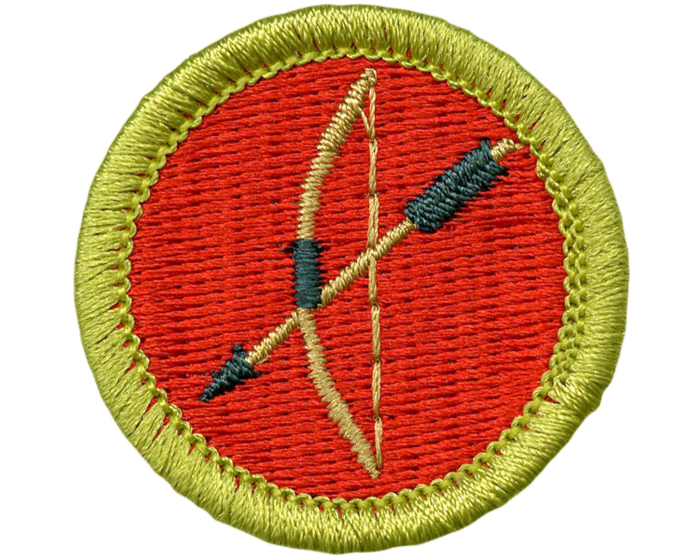
Archery involves the use of various equipment, each with its safety features. It is essential to understand and maintain these components to prevent accidents.Proper inspection and maintenance of archery equipment are crucial for safety. This includes regularly checking the bowstring for fraying or damage, inspecting the arrows for cracks or splinters, and ensuring the target is in good condition.
Using appropriate arrows and targets is also essential. Arrows should match the bow’s draw weight, and targets should be designed to stop arrows safely.
Arrow Safety
Arrows are a crucial component of archery, and their safety should be prioritized. Always inspect arrows before use, checking for cracks, splinters, or damage. Ensure the arrowheads are securely attached and the fletching is intact. Never dry-fire an arrow (shooting without an arrow in the bow), as this can damage the bow.
Target Safety
Targets are essential for safe archery practice. They should be placed at an appropriate distance and in a safe direction. Ensure the target is large enough to accommodate all arrows and is designed to stop them safely. Regularly inspect the target for wear and tear, and replace it when necessary.
Range Safety
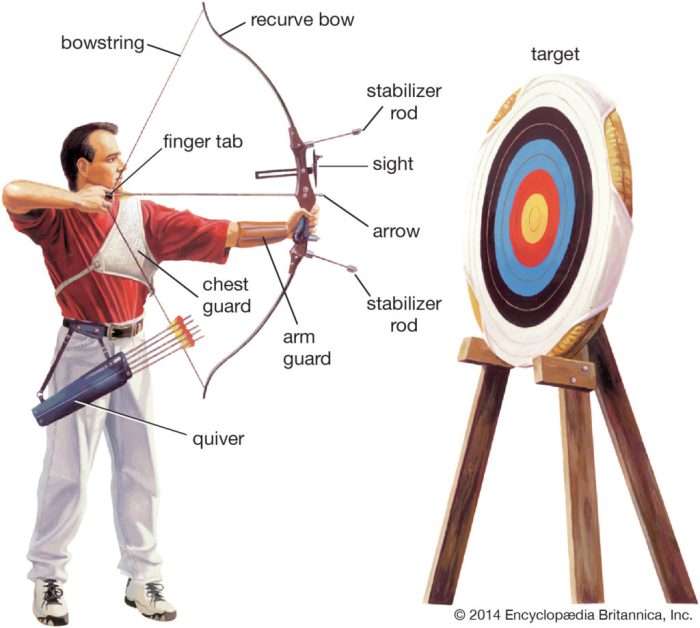
Archery ranges must adhere to strict safety protocols to prevent accidents and injuries. These protocols encompass range operation rules, designated shooting areas, backstops, and the roles of range officers and safety monitors.
Designated Shooting Areas
Archery ranges feature clearly marked shooting areas where archers stand to shoot. These areas are designed to provide ample space for archers to draw their bows and release arrows safely without interfering with others.
Backstops
Behind the shooting areas are backstops, which are barriers that stop arrows from traveling beyond the range. Backstops can be made of various materials, such as straw bales, rubber, or earth embankments, and are designed to absorb the impact of arrows and prevent them from causing harm.
Range Officers and Safety Monitors, Archery merit badge safety
Trained range officers oversee the safe operation of archery ranges. They enforce safety rules, monitor archers’ behavior, and provide assistance when needed. Safety monitors assist range officers in maintaining order and ensuring that all archers follow safety protocols.
Personal Safety
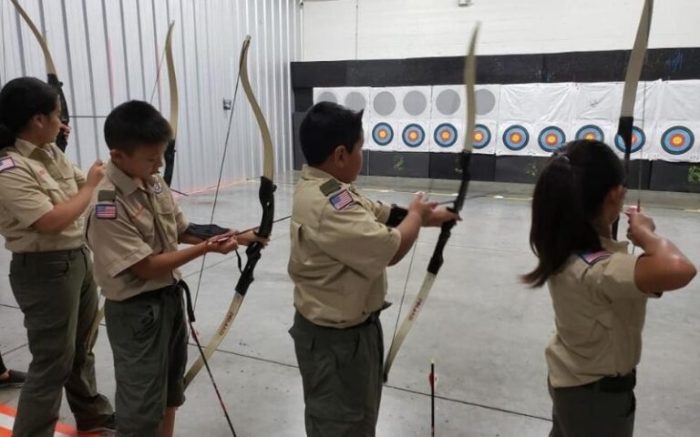
Ensuring personal safety while engaging in archery is paramount. Adhering to proper safety protocols minimizes the risk of injuries and accidents.
Proper Clothing and Protective Gear
Wearing appropriate clothing and protective gear is crucial for archer safety. Clothing should be comfortable, non-restrictive, and made of breathable materials. Avoid loose clothing that could get caught in the bowstring or arrows. Closed-toe shoes provide stability and protect the feet from potential injuries.
Archers should wear protective gear, including an arm guard to shield the forearm from the bowstring, and finger guards or gloves to protect the fingers from abrasion.
Maintaining Focus and Avoiding Distractions
Maintaining focus and avoiding distractions are essential for safe archery. Archers should be fully attentive to their surroundings and the task at hand. Conversations, electronic devices, or other distractions should be minimized or eliminated.
Archers should establish a consistent shooting routine and focus on proper form and technique. This helps develop muscle memory and improves accuracy while reducing the likelihood of accidents.
Handling Arrows Safely
Proper handling of arrows is crucial to prevent injuries. Archers should always carry arrows in a quiver or case, with the points facing down. Arrows should never be pointed at anyone, even in jest.
When retrieving arrows from the target, archers should approach cautiously and remove them carefully. Arrows should be inspected for damage before each shot to ensure they are safe to use.
Emergency Procedures
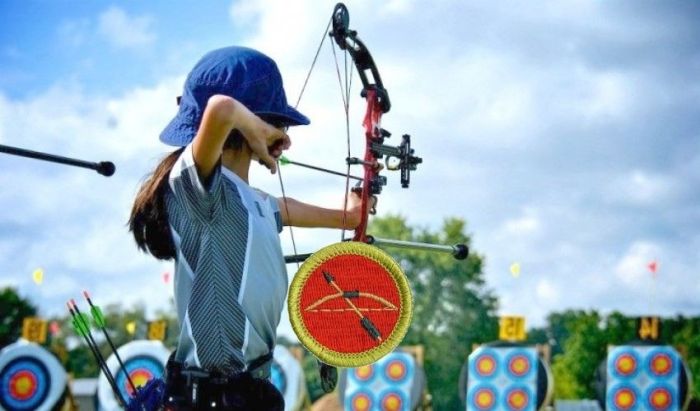
In the event of an accident or injury on the archery range, it is crucial to follow established emergency procedures to ensure the safety and well-being of all participants.
The primary objective of emergency procedures is to minimize harm, provide prompt medical assistance, and prevent further incidents.
First Aid Administration
- Assess the situation and determine the nature and severity of the injury.
- If necessary, call for medical assistance immediately by dialing 911 or the local emergency number.
- Provide basic first aid as appropriate, such as applying pressure to stop bleeding, stabilizing broken bones, or treating minor cuts and abrasions.
- Stay with the injured person and monitor their condition until medical help arrives.
Reporting Safety Concerns and Incidents
It is imperative to report any safety concerns or incidents that occur on the archery range, regardless of their severity.
Reporting helps identify potential hazards, address safety deficiencies, and prevent future accidents.
- All incidents, including near misses and equipment malfunctions, should be reported to the range safety officer or instructor.
- Provide a clear and accurate account of the incident, including details such as the time, location, and individuals involved.
- Participate in any investigations or reviews to help improve safety protocols.
Ethical Considerations
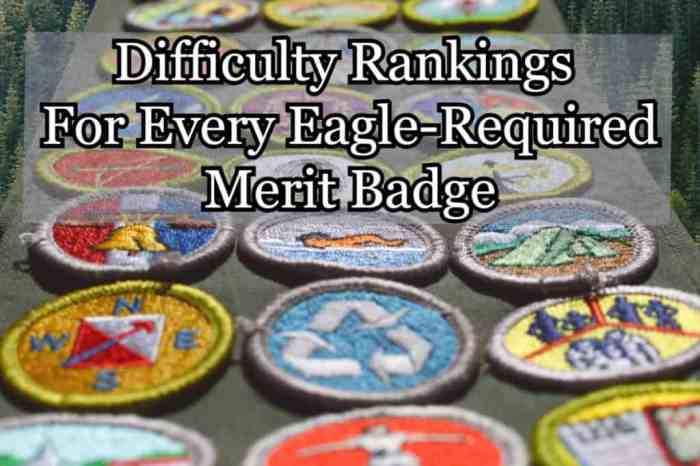
Archery, like any other activity, comes with its own set of ethical principles and values that guide responsible and respectful practices. Understanding and adhering to these ethical considerations is crucial for promoting a positive and safe environment for all archers.
Respect is a cornerstone of ethical archery. Archers should show respect for fellow archers, regardless of their skill level or experience. This includes maintaining proper etiquette on the range, such as waiting your turn, being mindful of others’ shots, and refraining from distracting or interfering with others.
Respecting the Environment
Archery involves interacting with the natural environment, and it is essential to respect and preserve it. Archers should avoid damaging trees or vegetation, and they should properly dispose of arrows and other materials. Additionally, archers should be aware of any wildlife in the area and take appropriate precautions to avoid disturbing or harming them.
Promoting Responsible Archery Practices
Ethical archery also involves promoting responsible practices that ensure the safety and well-being of all participants. This includes following all range rules and regulations, using proper equipment, and maintaining a high level of safety awareness. By adhering to these ethical principles, archers can create a positive and enjoyable experience for themselves and others.
Last Word
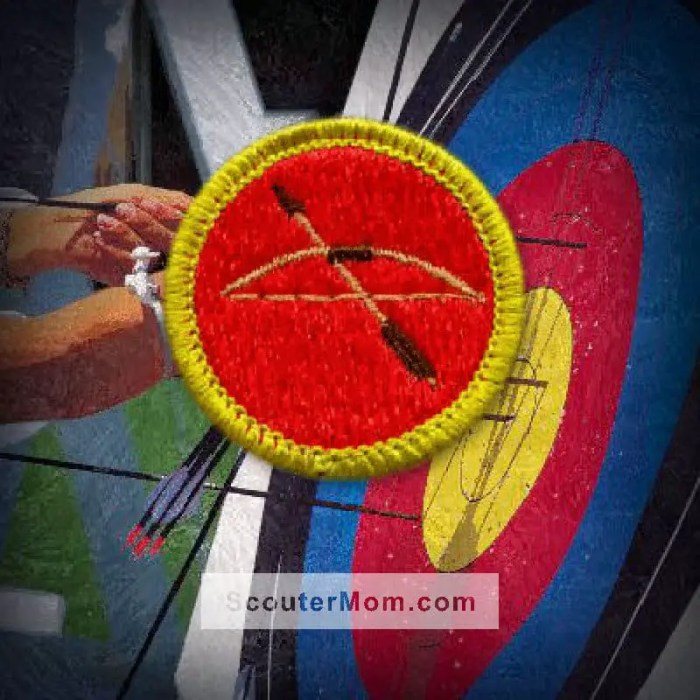
By adhering to the safety guidelines Artikeld in this guide, archers can minimize risks and maximize their enjoyment of this ancient and captivating sport. Archery merit badge safety empowers individuals to embrace the challenge of archery while prioritizing their well-being and the well-being of others, fostering a safe and enriching archery experience for all.
Commonly Asked Questions
What are the key safety guidelines for archery?
Always point the arrow in a safe direction, never at anyone or anything you don’t intend to shoot. Keep your fingers away from the arrow’s path. Wear appropriate safety gear, including eye and hand protection.
How should I inspect my archery equipment?
Regularly check your bow, arrows, and other equipment for any damage or wear. Inspect the bowstring for fraying or damage. Ensure arrows are straight and have no cracks or splinters.
What is the role of a range officer in archery?
Range officers oversee the safe operation of an archery range. They enforce safety rules, provide guidance to archers, and respond to any incidents or emergencies.
